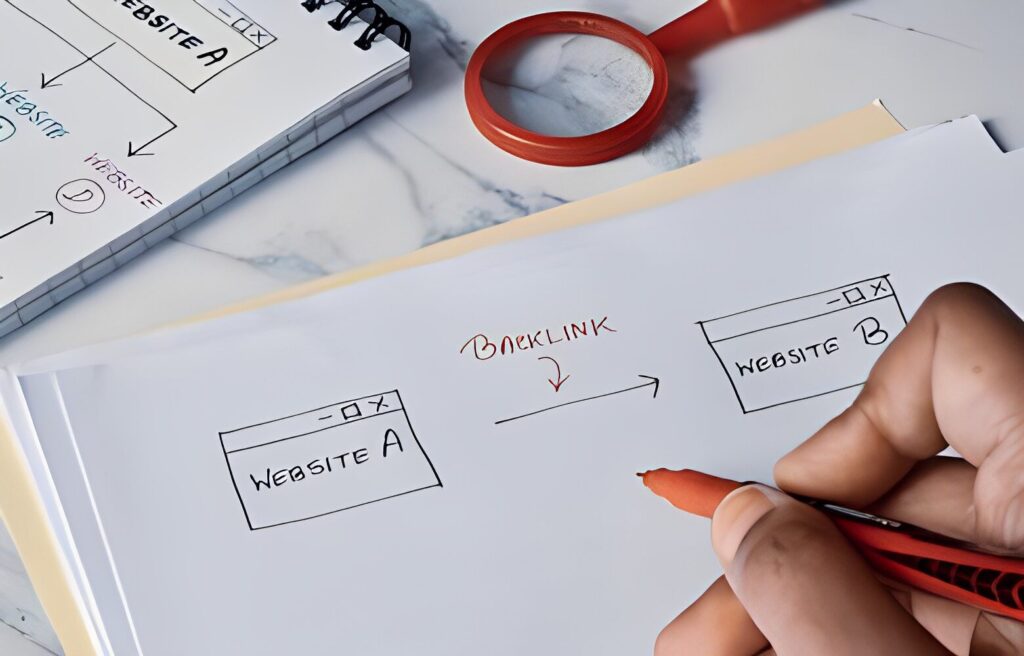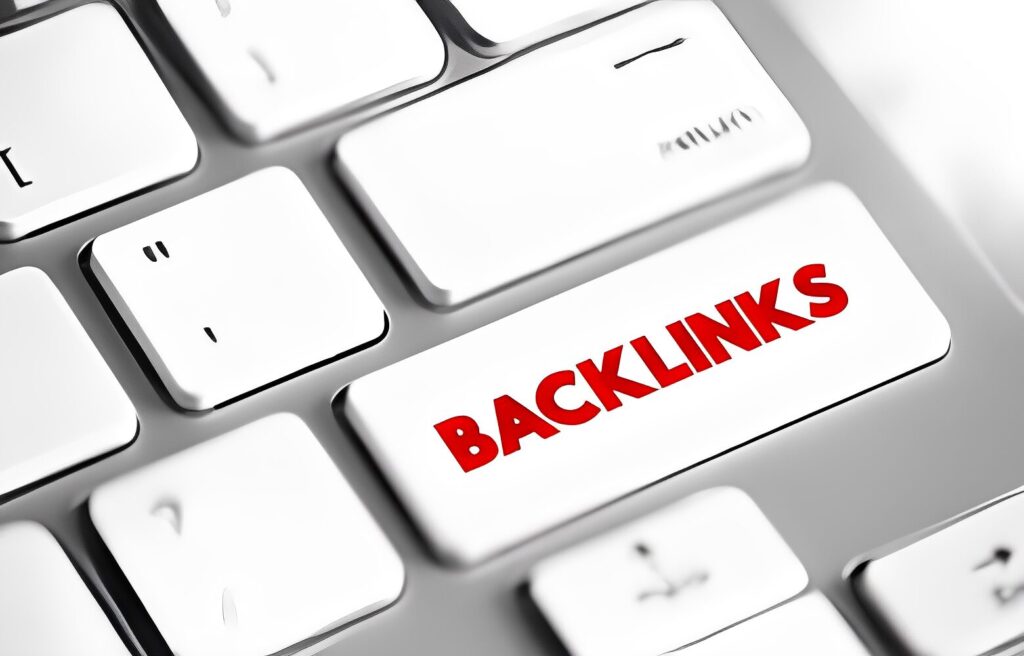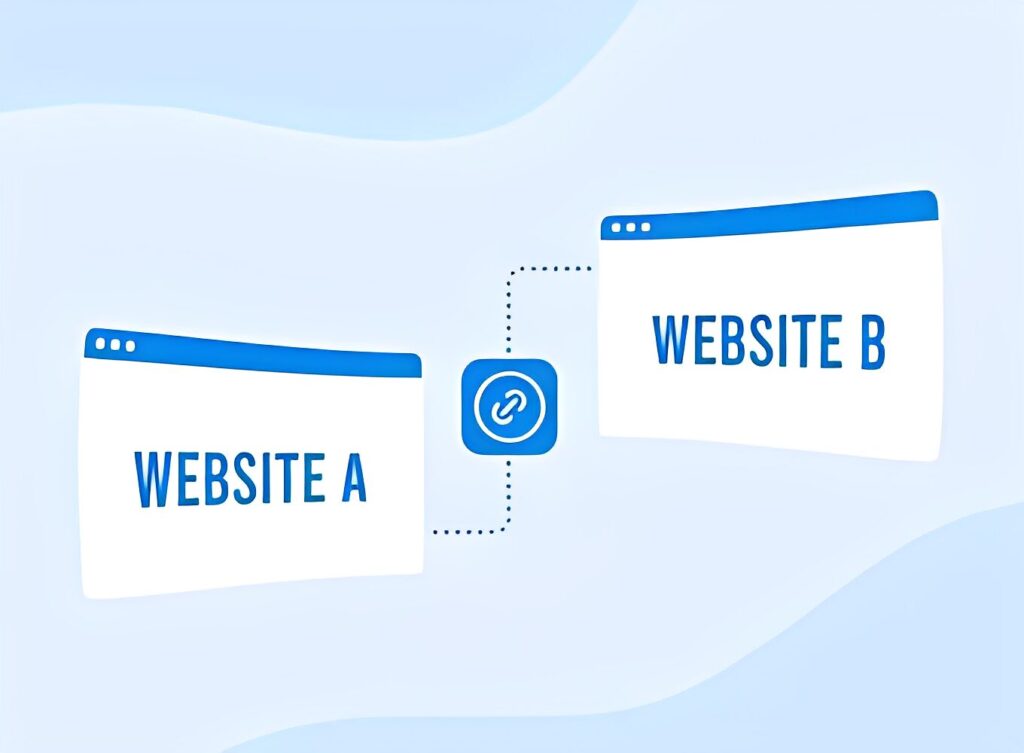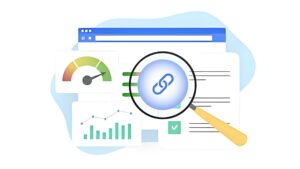Have you ever wondered how many backlinks per day is the sweet spot for boosting your website’s SEO without overstepping Google’s guidelines? It’s a question that echoes through the halls of digital marketing and SEO forums everywhere. Finding the right answer is not just about playing it safe; it’s about unlocking the full potential of your website’s search engine ranking.
This guide will cut through the noise and myths surrounding backlink building, offering you clear, actionable strategies. We’ll explore how to build your backlinks at a pace that maximises your SEO efforts and keeps your site firmly within Google’s good graces.
Let’s get down to the business of mastering backlinks and pushing your site to the top of the search results.
Understanding Backlinks: A Quick Recap
Before we tackle “How Many Backlinks Per Day Are Safe,” let’s quickly revisit what backlinks are. In simple terms, backlinks are links from other websites pointing to your site. They are critical for SEO because they signal to search engines like Google that other sites find your content valuable. But it’s not just about quantity. The quality of these backlinks is crucial.

The “Safe Backlinks” Dilemma: Quantity vs Quality
Now, back to our main query: “How many backlinks per day?” It’s a question that doesn’t have a one-size-fits-all answer. The ideal number of backlinks per day varies depending on several factors, including the age of your website, its current authority, and the quality of the backlinks you’re acquiring.
Let’s see what fits your website.
How Many Backlinks Per Day Are Safe: ‘For a New Website’
If you’re working with a new website, the answer to “How Many Backlinks Per Day Are Safe” is to start slow. Building too many backlinks too quickly can raise red flags with search engines.
For new sites, a conservative approach is key. A handful of high quality backlinks per day is a good starting point, gradually increasing as your site gains more authority.
How Many Backlinks Per Day Are Safe: ‘For an Established Website’
For more established websites, “How Many Backlinks Per Day Are Safe” can have a different answer.
If your site already has a degree of authority and a solid backlink profile, it can handle a higher number of daily backlinks. However, the focus should still be on quality over quantity.
InsideAdX specialises in SEO for websites that are looking to increase their search rankings or to get some groundbreaking organic traffic. You can get a tailor-made strategies for optimal growth at InsideAdX in under 24 hours, get a free quote now.
What Google’s Latest Link Spam Policies Say

It’s vital to understand the landscape shaped by Google’s rigorous policies and algorithm updates targeting link spam. Google’s stance is not just stringent; it’s ever evolving, with the aim of maintaining the integrity and relevance of search results.
Google’s Evolving Approach to Link Spam
Google’s algorithm updates, particularly the notable Penguin update in 2012, significantly changed the game in link building. This update penalised sites involved in manipulative web spam practices, emphasising quality over quantity in backlinks. The critical message here is clear: high-quality, relevant backlinks are paramount, and deceptive practices are a strict no-go.
Google’s SpamBrain: A New Era in Link Evaluation
Fast forward to December 2022, Google introduced a pivotal update utilising an AI-based system called SpamBrain. This system specifically targets link spam by detecting and neutralising unnatural links. It’s a sophisticated approach that looks beyond just the surface, analysing the depth and quality of backlinks.
Spam Brain marks a departure from previous Google spam algorithms. Unlike traditional penalties, Spam Brain devalues sites overall, rather than outright penalising them. This means that even high-quality content could see a drop in rankings if the backlink profile isn’t up to par. It’s a holistic approach, looking at the entire ecosystem of backlinks and their quality.
Key Insights from Google’s Quality Rater Guidelines
Google’s Quality Rater Guidelines offer an in-depth perspective on what the search giant values in web pages and websites. These guidelines focus on several criteria, including:
- Relevance: How well a page matches the user’s search query.
- Usefulness: The content’s ability to meet the user’s needs.
- Overall Quality: Assessing the webpage’s design, layout, and content.
- Authority and Credibility: Evaluating the website’s trustworthiness and expertise.
Understanding these guidelines is crucial for aligning your SEO strategy with Google’s expectations, ensuring your backlinking efforts are both effective and compliant.
Google’s Spam Policies: What to Avoid
To stay aligned with Google’s policies, it’s essential to steer clear of practices that are considered spammy, such as:
- Buying Links: Purchasing backlinks to fake site importance.
- Link Farms: Participating in networks solely to increase link count.
- Hidden or Irrelevant Links: Implementing deceptive practices in linking.
- Low-Quality Directory Spam: Using directories solely for SEO manipulation.
- Keyword Stuffing and Thin Content: Creating low-value content filled with keywords.
Focusing on building a natural, high-quality backlink profile is key. Regular audits and monitoring of your backlink profile can also help in identifying and addressing potential issues before they escalate.
Strategic Backlink Building: Best Practices to Stay Safe
While there’s no magic number for how many backlinks per day are ideal, there are best practices you should follow to ensure your backlink strategy is both safe and effective.

1. Focus on Natural Growth
The growth of your backlinks should appear natural. This means a gradual increase that correlates with the growth of your content and audience. Sudden spikes in backlink numbers can be a red flag for search engines, suggesting manipulative practices.
2. Diversify Your Backlink Profile
Diversification is key in backlink building. Aim for links from various domains, different types of websites, and across various types of content. This not only appears more natural but also broadens your reach and potential audience.
One often overlooked but potentially valuable source is forum backlinks. Forums can be niche-specific and provide a platform for gaining backlinks that are both relevant and authoritative. However, the approach to acquiring forum backlinks should be strategic and mindful to ensure they are beneficial to your SEO efforts.
For an in-depth look at leveraging forum backlinks effectively, you might find our dedicated article on forum backlinks particularly insightful. It covers best practices and key considerations for integrating forum backlinks into your overall backlink strategy.
3. Prioritise High Quality Sources
Quality trumps quantity in the world of backlinks. Links from high-authority, relevant sites in your niche are far more valuable than numerous links from low-quality, irrelevant sources. Remember, one authoritative backlink can be worth more than dozens of poor-quality ones.
4. Monitor and Analyse Your Backlinks
Regularly monitoring your backlink profile is crucial. Tools like Google Search Console, Ahrefs, or Moz can help you track your backlinks, assess their quality, and identify any potentially harmful links that could attract penalties.
Conclusion: How Many Backlinks Per Day Are Safe
In conclusion, “How Many Backlinks Per Day Are Safe” depends on various factors like your website’s age, current authority, and the quality of backlinks. There’s no universal number, but the golden rule is to prioritise quality, aim for natural growth, and consistently monitor your backlink profile.
Remember, effective SEO is a marathon, not a sprint. Focus on building your backlinks steadily and organically, and you’ll set your site up for long-term success.
Stay patient, stay consistent, and watch your site climb the SEO ladder, one quality backlink at a time.
FAQs: How Many Backlinks Per Day Are Safe; In Your Case
Q1: How many backlinks per day are safe for a new website?
A: For new websites, the safe number of backlinks per day is relatively low. It’s advisable to start with a few high-quality backlinks per day, gradually increasing as the site gains more authority. Rapidly accumulating a large number of backlinks can appear suspicious to search engines.
Q2: How many backlinks per day are safe for an established website?
A: Established websites can typically handle a higher number of backlinks per day compared to new sites. However, the focus should always be on the quality of backlinks rather than just the quantity. A safe approach would be to incrementally increase backlinks as your content grows and diversifies.
Q3: Does the safe number of backlinks per day vary by industry or niche?
A: Yes, the safe number of backlinks per day can vary depending on the industry or niche. Highly competitive niches may require a more aggressive backlinking strategy, but it’s crucial to maintain the balance between quality and quantity.
Q4: Can exceeding the safe number of backlinks per day lead to penalties?
A: Yes, building backlinks too aggressively can lead to search engine penalties, especially if the links are of low quality or appear unnatural. Sticking to a safe number of high-quality backlinks per day is key to avoiding such penalties.
Q5: How many backlinks per day are safe to avoid Google’s Penguin penalty?
A: While there’s no specific number, to avoid the Penguin penalty, focus on acquiring backlinks naturally and at a steady pace. The quality of backlinks is more important than the number, so prioritise getting links from reputable, relevant sources.
Q6: How can I monitor if the number of backlinks per day is safe for my website?
A: Regularly monitoring your backlink profile using tools like Google Search Console, Ahrefs, or Moz can help you understand if your backlink growth is safe. Look out for unnatural spikes in backlink numbers and assess the quality of new links.
Q7: How many backlinks per day are considered unnatural by Google?
A: There’s no exact number that Google considers unnatural. It depends on various factors like the age of your website, the consistency of link acquisition, and the quality of the backlinks. It’s more about the pattern and quality of backlink growth than the specific number per day.

